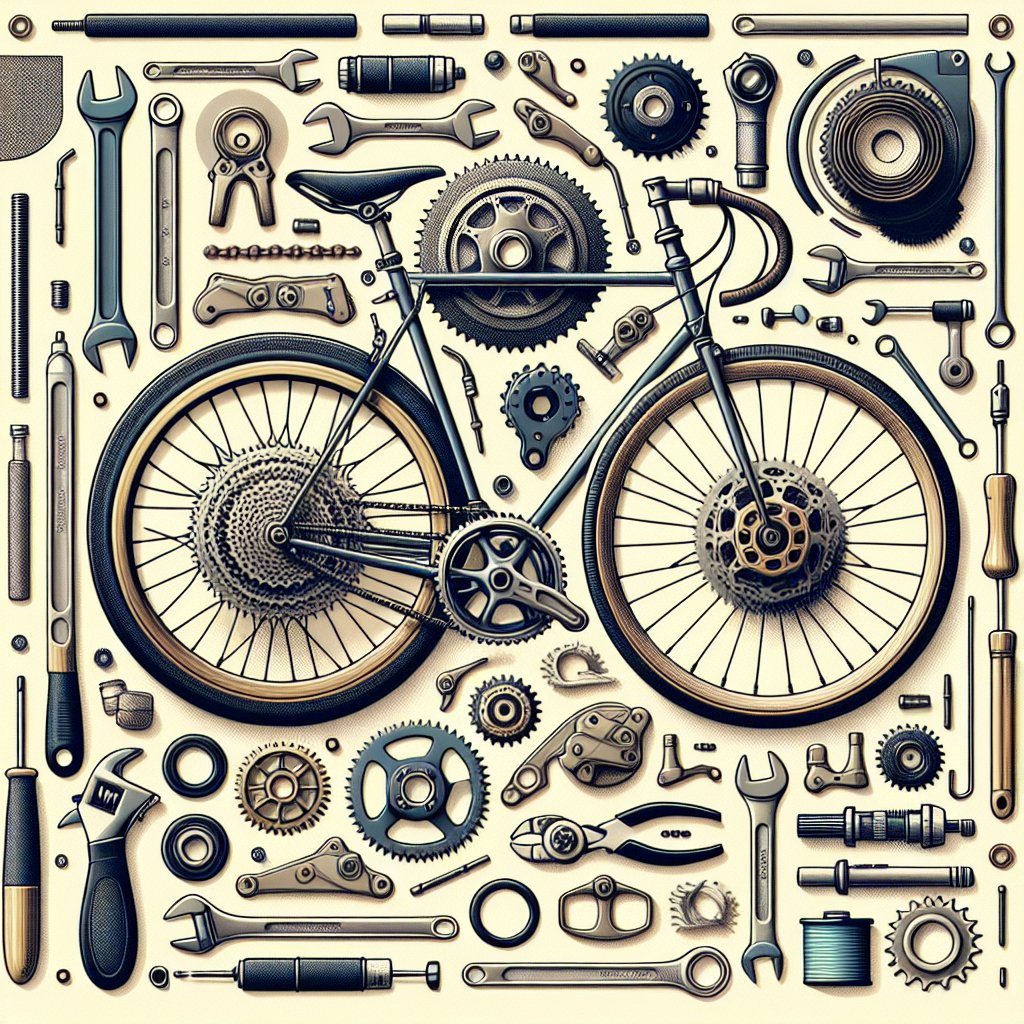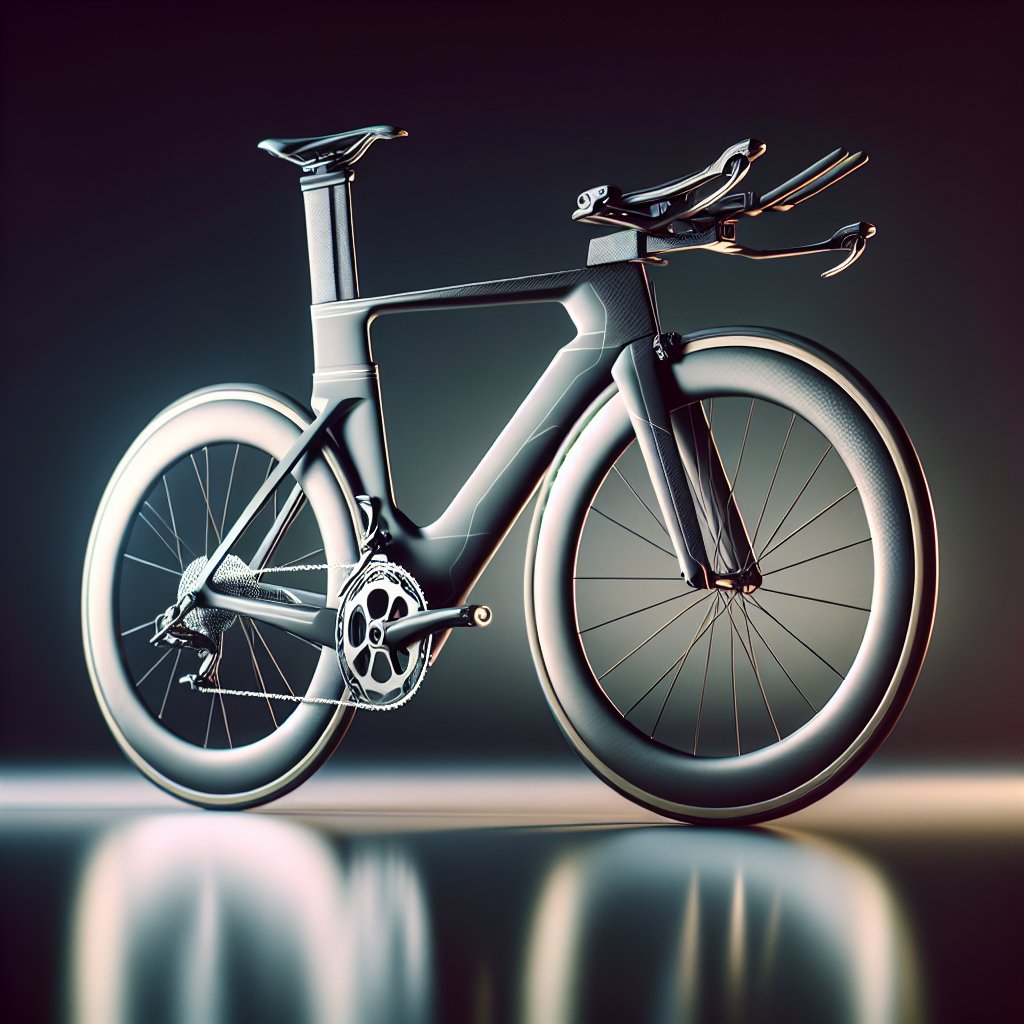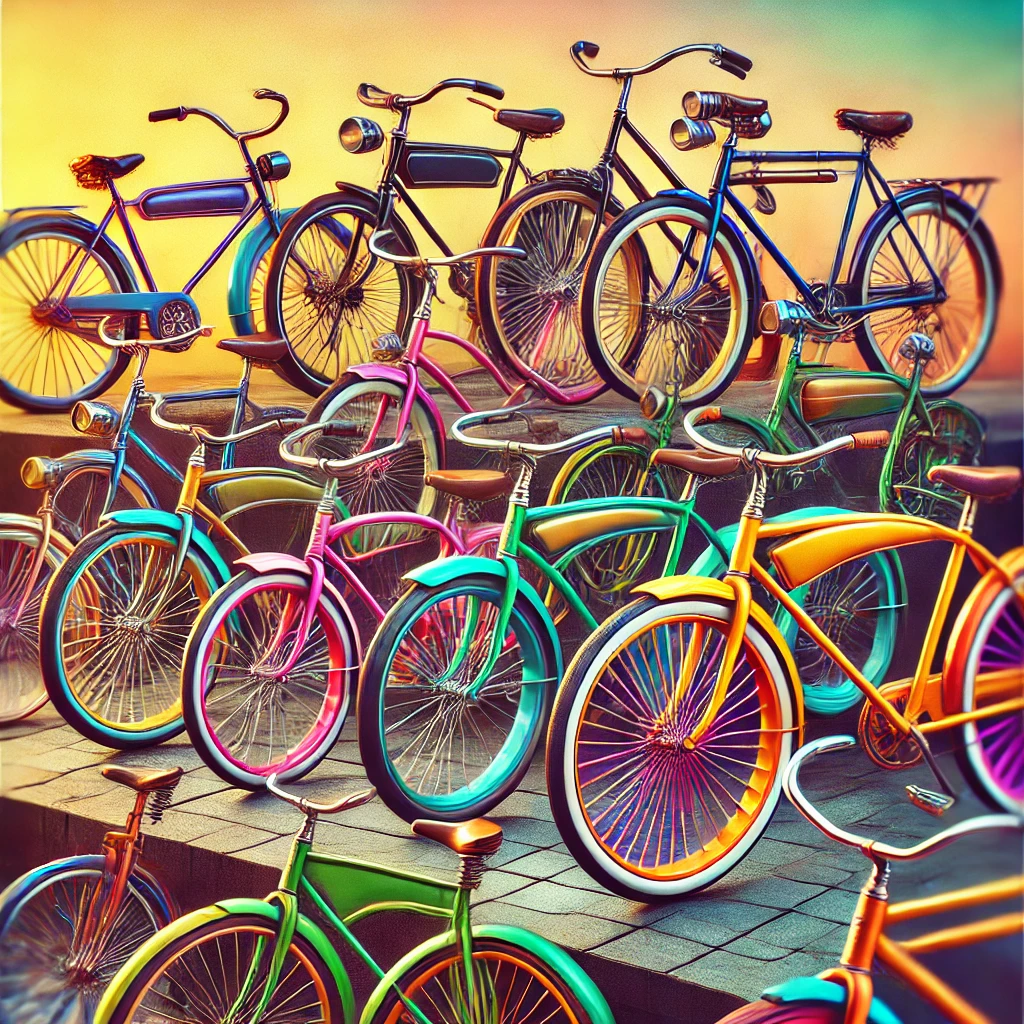Maintaining your bicycle is essential for ensuring a smooth and safe ride. This guide will walk you through the fundamental aspects of bicycle maintenance, helping you keep your bike in top condition.
Chapter 1: Cleaning Your Bicycle
Regular cleaning is the cornerstone of bicycle maintenance. Dirt, grime, and debris can accumulate on your bike, leading to wear and tear on its components. A clean bike not only looks better but also performs more efficiently.
1.1 Tools and Materials Needed
Before you start cleaning your bicycle, gather the necessary tools and materials:
- Bucket of warm water
- Bike-specific cleaner or mild dish soap
- Soft brushes (various sizes)
- Sponges and rags
- Chain cleaner tool
- Degreaser
- Lubricant
1.2 Step-by-Step Cleaning Process
Follow these steps to clean your bicycle effectively:
- Step 1: Rinse your bike with water to remove loose dirt and debris.
- Step 2: Apply bike-specific cleaner or mild dish soap to a sponge or brush and scrub the frame, wheels, and components.
- Step 3: Use a chain cleaner tool and degreaser to clean the chain thoroughly.
- Step 4: Rinse the bike again to remove soap and degreaser residue.
- Step 5: Dry the bike with a clean rag to prevent rust and water spots.
- Step 6: Lubricate the chain and other moving parts to ensure smooth operation.
Chapter 2: Inspecting and Adjusting Components
Regular inspection and adjustment of your bike’s components are crucial for maintaining its performance and safety. This chapter will cover the key areas to focus on during your maintenance routine.
2.1 Brakes
Brakes are one of the most critical components of your bicycle. Ensuring they are in good working condition is vital for your safety.
- Inspect Brake Pads: Check the brake pads for wear and tear. Replace them if they are worn down to the wear line or if they are unevenly worn.
- Adjust Brake Cables: Ensure the brake cables are properly tensioned. If the brakes feel loose or unresponsive, adjust the cable tension using the barrel adjuster or by tightening the cable at the brake caliper.
- Check Brake Levers: Make sure the brake levers are functioning smoothly and are not loose. Tighten any loose bolts or screws.
2.2 Tires and Wheels
Properly maintained tires and wheels are essential for a smooth and safe ride. Regularly inspect and adjust them to ensure optimal performance.
- Check Tire Pressure: Use a tire pressure gauge to check the pressure of your tires. Inflate them to the recommended pressure indicated on the sidewall of the tire.
- Inspect Tire Tread: Look for signs of wear, cuts, or punctures on the tire tread. Replace the tires if they are excessively worn or damaged.
- True the Wheels: Spin the wheels and check for any wobbling or unevenness. If the wheels are not true, use a spoke wrench to adjust the tension of the spokes and straighten the wheel.
2.3 Drivetrain
The drivetrain is responsible for transferring power from your pedals to the wheels. Keeping it in good condition is essential for efficient riding.
- Inspect the Chain: Check the chain for signs of wear, rust, or damage. Replace the chain if it is stretched or damaged.
- Clean and Lubricate the Drivetrain: Regularly clean the chain, cassette, and chainrings using a degreaser and a brush. After cleaning, apply a suitable lubricant to the chain and other moving parts.
- Check Derailleurs: Ensure the front and rear derailleurs are properly aligned and functioning smoothly. Adjust the limit screws and cable tension if necessary.
Chapter 3: Regular Maintenance Schedule
Establishing a regular maintenance schedule is key to keeping your bicycle in top condition. This chapter outlines a suggested maintenance routine to follow.
3.1 Weekly Maintenance
Perform these tasks on a weekly basis to ensure your bike remains in good working order:
- Check tire pressure and inflate if necessary.
- Inspect the chain and drivetrain for dirt and wear. Clean and lubricate as needed.
- Test the brakes and adjust if necessary.
- Inspect the frame and components for any signs of damage or wear.
3.2 Monthly Maintenance
In addition to the weekly tasks, perform these maintenance tasks on a monthly basis:
- Thoroughly clean the entire bike, including the frame, wheels, and components.
- Check the wheels for trueness and adjust if necessary.
- Inspect the brake pads and replace if worn.
- Check the headset and bottom bracket for any play or looseness. Tighten if necessary.
3.3 Seasonal Maintenance
Perform these tasks at the beginning of each riding season or every few months:
- Inspect and replace any worn or damaged components, such as tires, brake pads, and cables.
- Check the suspension (if applicable) and service according to the manufacturer’s recommendations.
- Inspect the frame for any cracks or damage. Address any issues promptly.
- Perform a thorough inspection of the entire bike and address any issues found.
Chapter 4: Troubleshooting Common Issues
Even with regular maintenance, you may encounter common issues with your bicycle. This chapter provides troubleshooting tips for some of the most common problems.
4.1 Squeaky Brakes
Squeaky brakes can be annoying and may indicate a problem. Here are some steps to troubleshoot and fix squeaky brakes:
- Clean the Brake Pads and Rims: Dirt and debris on the brake pads and rims can cause squeaking. Clean them with rubbing alcohol or a bike-specific cleaner.
- Adjust the Brake Pads: Ensure the brake pads are properly aligned with the rim. They should make contact with the rim evenly and not touch the tire.
- Sand the Brake Pads: If the brake pads are glazed, lightly sand them with fine-grit sandpaper to remove the glaze and improve braking performance.
4.2 Chain Skipping
Chain skipping can be frustrating and may indicate a problem with the drivetrain. Here are some steps to troubleshoot and fix chain skipping:
- Check Chain Wear: A worn chain can cause skipping. Use a chain wear indicator tool to check for chain wear and replace the chain if necessary.
- Inspect the Cassette and Chainrings: Worn or damaged cassette cogs and chainrings can cause skipping. Replace them if they are worn or damaged.
- Adjust the Derailleurs: Ensure the front and rear derailleurs are properly adjusted. Check the limit screws and cable tension and make adjustments as needed.
4.3 Flat Tires
Flat tires are a common issue for cyclists. Here are some steps to troubleshoot and fix flat tires:
- Inspect the Tire and Tube: Remove the tire and tube and inspect them for punctures, cuts, or damage. Replace the tube if it is punctured or damaged.
- Check the Rim Tape: Ensure the rim tape is properly installed and not damaged. Replace it if necessary.
- Inflate the Tire Properly: Use a tire pressure gauge to inflate the tire to the recommended pressure. Avoid overinflating or underinflating the tire.
Chapter 5: Essential Tools for Bicycle Maintenance
Having the right tools is essential for performing bicycle maintenance effectively. This chapter outlines the essential tools every cyclist should have in their toolkit.
5.1 Basic Tools
These basic tools are essential for most bicycle maintenance tasks:
- Allen wrenches (various sizes)
- Screwdrivers (Phillips and flathead)
- Tire levers
- Chain tool
- Spoke wrench
- Pedal wrench
- Torque wrench
5.2 Specialized Tools
These specialized tools are useful for more advanced maintenance tasks:
- Bottom bracket tool
- Headset press
- Hub cone wrenches
- Crank puller
- Chain whip and cassette lockring tool
- Suspension pump (for bikes with suspension)
5.3 Maintenance Stand
A maintenance stand is a valuable tool for any cyclist. It holds your bike securely in place, making it easier to perform maintenance tasks. Look for a sturdy, adjustable stand that can accommodate different bike sizes and styles.
Conclusion
Regular bicycle maintenance is essential for ensuring a safe and enjoyable riding experience. By following the steps outlined in this guide, you can keep your bike in top condition and address common issues before they become major problems. Remember to establish a regular maintenance schedule, use the right tools, and stay vigilant for any signs of wear or damage. Happy riding!



